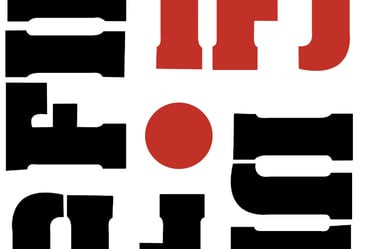The Strange and Unusual Olympic Sports of the 1900 Games


One of the most peculiar events of the 1900 Olympic Games was the pigeon shooting competition. Yes, you read that right - pigeon shooting. In this event, live pigeons were released from traps and the participants had to shoot them down with their shotguns. The sport was met with controversy and outrage, as animal rights activists protested against the cruelty of the event. Eventually, the International Olympic Committee decided to remove pigeon shooting from the Olympic program, never to be seen again.
Another bizarre sport that made its appearance in the 1900 Games was live pigeon racing. This sport involved releasing pigeons from a specific location and timing how long it took for them to return to their respective coops. While pigeon racing is still practiced today, it is no longer a part of the Olympic Games.
One of the more unusual athletic events of the 1900 Games was underwater swimming. Participants were required to swim underwater for as long as possible, with the winner being the one who could hold their breath the longest. This event showcased the endurance and lung capacity of the athletes, but it was ultimately phased out of the Olympic program due to safety concerns.
In addition to these peculiar sports, the 1900 Olympic Games also featured some unconventional events such as firefighting, kite flying, and even a game called "Tug of War for Five". These events were seen as a way to entertain the spectators and add variety to the program, but they were not considered traditional Olympic sports.
The inclusion of these strange and unusual sports in the 1900 Olympic Games highlights the evolving nature of the Games over time. While some of these events may seem odd by today's standards, they were a reflection of the interests and trends of the era. As the Olympic Games continue to evolve, new sports are introduced and old ones are phased out, ensuring that the Games remain a platform for showcasing the best of human athleticism and innovation.
Despite its initial inclusion as a demonstration event, kite flying has evolved into a highly competitive and technically demanding sport. In recent years, it has gained recognition and has even been proposed as a potential Olympic sport. The International Kiteboarding Association (IKA) has been actively advocating for the inclusion of kite flying in the Olympic Games, citing its growing popularity and the unique challenges it presents to athletes.
Modern kite flying is a far cry from the leisurely activity it once was. Athletes now compete in various disciplines, including freestyle, racing, and team events. In freestyle competitions, participants perform awe-inspiring tricks and maneuvers, showcasing their creativity and technical skills. These routines often involve complex aerial acrobatics, such as loops, spins, and flips, all while maintaining control of the kite.
Racing is another thrilling aspect of competitive kite flying. Athletes navigate a predetermined course, using the wind to propel themselves forward at incredible speeds. The combination of physical strength, strategic decision-making, and precise kite control makes racing a true test of skill and endurance. Spectators are captivated as they witness the intense battles between competitors, each vying for the coveted first place.
Team events in kite flying are equally captivating. Teams of athletes work together to perform synchronized routines, choreographed to music. The precision and coordination required to execute these routines flawlessly are truly remarkable. The beauty and grace of the kites soaring through the sky in perfect harmony leave spectators in awe, appreciating the sport as both an art form and a display of athleticism.
Furthermore, kite flying offers unique opportunities for innovation and technological advancements. Athletes and engineers are constantly pushing the boundaries of kite design and materials to maximize performance. The development of specialized kites, harnesses, and control systems has revolutionized the sport, enabling athletes to achieve greater heights, faster speeds, and more intricate maneuvers.
With its combination of athleticism, creativity, and technical prowess, kite flying has proven to be a sport worthy of Olympic recognition. As the sport continues to evolve and gain popularity worldwide, it is only a matter of time before kite flying takes its rightful place among the prestigious Olympic events. The inclusion of kite flying in the Olympic Games would not only showcase the incredible skill and dedication of its athletes but also inspire a new generation of kite enthusiasts to take to the skies and reach for new heights.
Firefighting: A Test of Strength and Skill
Another unusual sport that made its appearance at the 1900 Games was firefighting. As strange as it may sound, this event was designed to test the strength, agility, and coordination of the participants. Firefighters from different countries competed against each other in simulated firefighting scenarios, demonstrating their ability to extinguish fires and rescue people in distress. While it may not have been as glamorous as other Olympic sports, firefighting showcased the bravery and skill of these unsung heroes.
In this unique sporting event, firefighters faced challenges that mirrored the real-life situations they encounter on a daily basis. The competition was held in a specially designed arena, where various obstacles and hazards were set up to recreate the chaos and intensity of a real fire emergency. Participants had to navigate through smoke-filled rooms, climb ladders, and carry heavy equipment, all while racing against the clock. Their ability to think quickly and make split-second decisions was put to the test as they assessed the situation, determined the best course of action, and executed their firefighting techniques with precision. Not only did this sport require physical strength and agility, but it also demanded a high level of technical skill and knowledge. Firefighters had to demonstrate their proficiency in using different types of fire extinguishers, hoses, and other firefighting equipment. They were evaluated on their ability to effectively control and extinguish fires of varying intensities, as well as their expertise in performing rescue operations. Judges closely observed their techniques, assessing their accuracy, speed, and overall effectiveness in handling the simulated emergencies. The inclusion of firefighting as an Olympic sport was a testament to the importance of these brave individuals and the vital role they play in society. It shed light on the often overlooked challenges they face and the immense physical and mental strength required to perform their duties. This event not only served as a platform for firefighters to showcase their skills but also raised awareness about fire safety and the need for proper training and equipment in firefighting departments worldwide. While firefighting as an Olympic sport was short-lived, its impact was significant. It brought recognition to the profession and highlighted the selflessness and dedication of firefighters who put their lives on the line to protect others. The event served as a reminder of the immense gratitude owed to these unsung heroes and the importance of supporting and honoring their contributions to society.As the cannons were wheeled into position, the crowd held its breath in anticipation. The sheer size and power of these artillery pieces were awe-inspiring. Each cannon was meticulously loaded with a heavy iron ball, and the gunners took their positions with focused determination.
The competitors knew that the key to success in cannon shooting lay in their ability to calculate the trajectory and adjust for factors such as wind speed and distance. They had to possess a deep understanding of the physics behind the flight of the cannonball to ensure their shot would hit the target with precision.
The tension in the air was palpable as the first contestant stepped forward. With a thunderous boom, the cannon fired, sending the iron ball hurtling through the sky. The crowd gasped as they watched the trajectory of the projectile, eagerly awaiting the impact.
Although the target was a stationary object, hitting it was no easy feat. The competitors had to gauge the distance and adjust their aim accordingly. They relied on their expertise and experience to make split-second decisions that could mean the difference between success and failure.
As the competition progressed, the crowd was treated to an impressive display of marksmanship. The cannons roared one after another, the ground shaking beneath the spectators' feet with each blast. The air was filled with the acrid smell of gunpowder, adding to the sensory experience of the event.
Despite the inherent danger of the sport, the spectators were enthralled by the spectacle before them. The precision and skill demonstrated by the competitors were truly remarkable. The crowd erupted in applause and cheers each time a cannonball found its mark, a testament to the incredible accuracy achieved by these athletes.
As the sun began to set, the final shots were fired, and the competition came to a close. The winners were celebrated for their exceptional performance, their names forever etched in Olympic history. Cannon shooting may have been a short-lived event in the Olympic Games, but its impact on the audience and the athletes themselves was undeniable.
As the sport gained popularity in the early 20th century, pigeon racing became a source of national pride for many countries. It was seen as a way to showcase the strength and resilience of a nation's birds, and winning a race was considered a great honor. However, behind the scenes, the sport had a much darker history.
During wartime, pigeons were used as messengers, carrying vital information across enemy lines. Their ability to navigate long distances and return to their home lofts made them invaluable in military operations. Pigeon racing was not only a means of training these messenger birds but also a way to test their speed and endurance.
However, the use of pigeons in war came at a great cost. Many birds were injured or killed while delivering messages, and their sacrifice often went unnoticed. The inclusion of pigeon racing in the Olympic Games was seen by some as a way to glorify a sport that had been used for such questionable purposes.
Despite the ethical concerns surrounding the sport, pigeon racing continued to thrive. It became a popular pastime for many enthusiasts, who bred and trained pigeons for racing. The sport attracted a wide range of participants, from working-class individuals looking for a way to escape their daily struggles to wealthy aristocrats seeking to showcase their status.
Over the years, pigeon racing evolved into a highly organized and competitive sport. Races were held across various distances, with birds released from different locations and competing to reach their home lofts first. The races were carefully timed and monitored, with strict rules and regulations in place to ensure fair competition.
Despite its controversial history, pigeon racing has managed to survive into the present day. While it may no longer be a part of the Olympic Games, the sport continues to captivate enthusiasts around the world. Pigeon racing clubs and organizations exist in many countries, with dedicated breeders and trainers working tirelessly to improve the performance of their birds.
Today, pigeon racing is seen as a way to celebrate the unique abilities of these remarkable birds. It is a sport that requires skill, patience, and a deep understanding of the birds' behavior. Pigeon fanciers take great pride in their birds, and the bond between trainer and pigeon is often a strong one.
Despite its controversial past, pigeon racing has managed to evolve into a sport that is appreciated for its unique qualities. It serves as a reminder of the deep connection between humans and animals and the incredible feats that can be achieved when the two work together.
The Unofficial and Controversial "Anthropology Days"
In addition to the strange and unusual sports that were officially included in the 1900 Games, there were also unofficial events that took place, which had a distinctly racist undertone. One such event was the "Anthropology Days" held during the 1904 St. Louis Olympics. These events were organized as a means of showcasing the perceived superiority of certain racial groups, particularly those of European descent. Participants from different racial backgrounds were pitted against each other in events such as "savage" races and "uncivilized" sports, perpetuating harmful stereotypes and reinforcing racial hierarchies.
These Anthropology Days were a disturbing reflection of the prevailing racist ideologies of the time. They were heavily influenced by the theories of social Darwinism, which posited that certain races were biologically superior to others. This pseudo-scientific belief system was used to justify colonization, slavery, and other forms of racial oppression. The organizers of the Anthropology Days sought to provide a platform for the validation and propagation of these discriminatory ideas. During these events, indigenous people from various parts of the world were brought to St. Louis to participate in what can only be described as degrading spectacles. They were expected to perform in ways that were meant to highlight their supposed "primitiveness" and contrast it with the perceived "civilization" of the European participants. These events included activities such as spear throwing, archery, and even a "Pygmy" village where indigenous people were put on display for the amusement of the spectators. The Anthropology Days were met with widespread criticism, both at the time and in subsequent years. Many prominent figures in the fields of anthropology and sports condemned these events as racist and unethical. Scholars argued that they perpetuated harmful stereotypes and reinforced racial hierarchies, undermining the principles of fairness and equality that should underpin sporting competitions. It is important to recognize and acknowledge the dark history of events like the Anthropology Days. By doing so, we can learn from the mistakes of the past and work towards creating a more inclusive and equitable future. The Olympic Games, as a symbol of international unity and cooperation, have a responsibility to confront and address the legacies of racism and discrimination that have marred their history. Only by doing so can they truly live up to their ideals of promoting peace, understanding, and respect among all nations and peoples.



